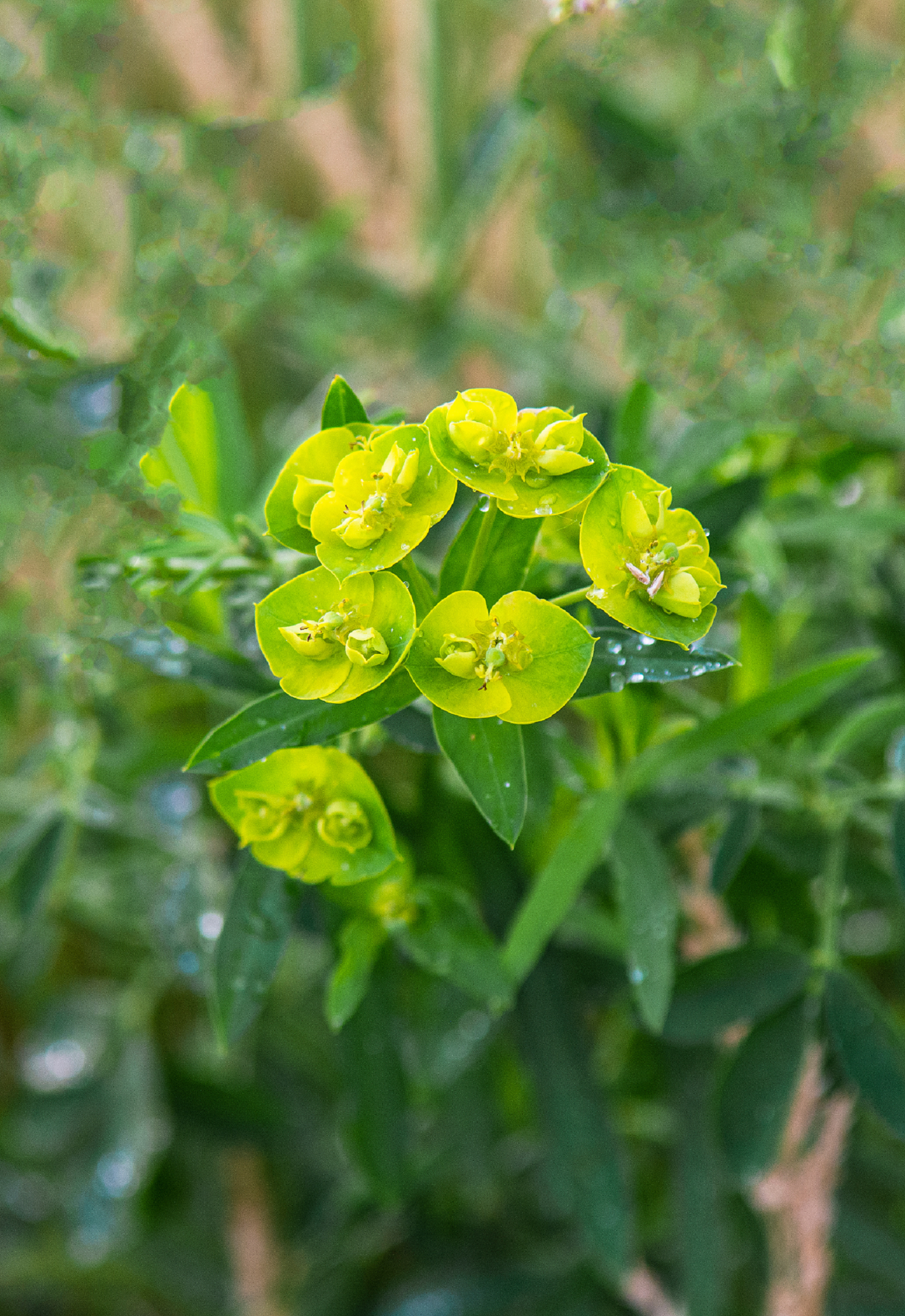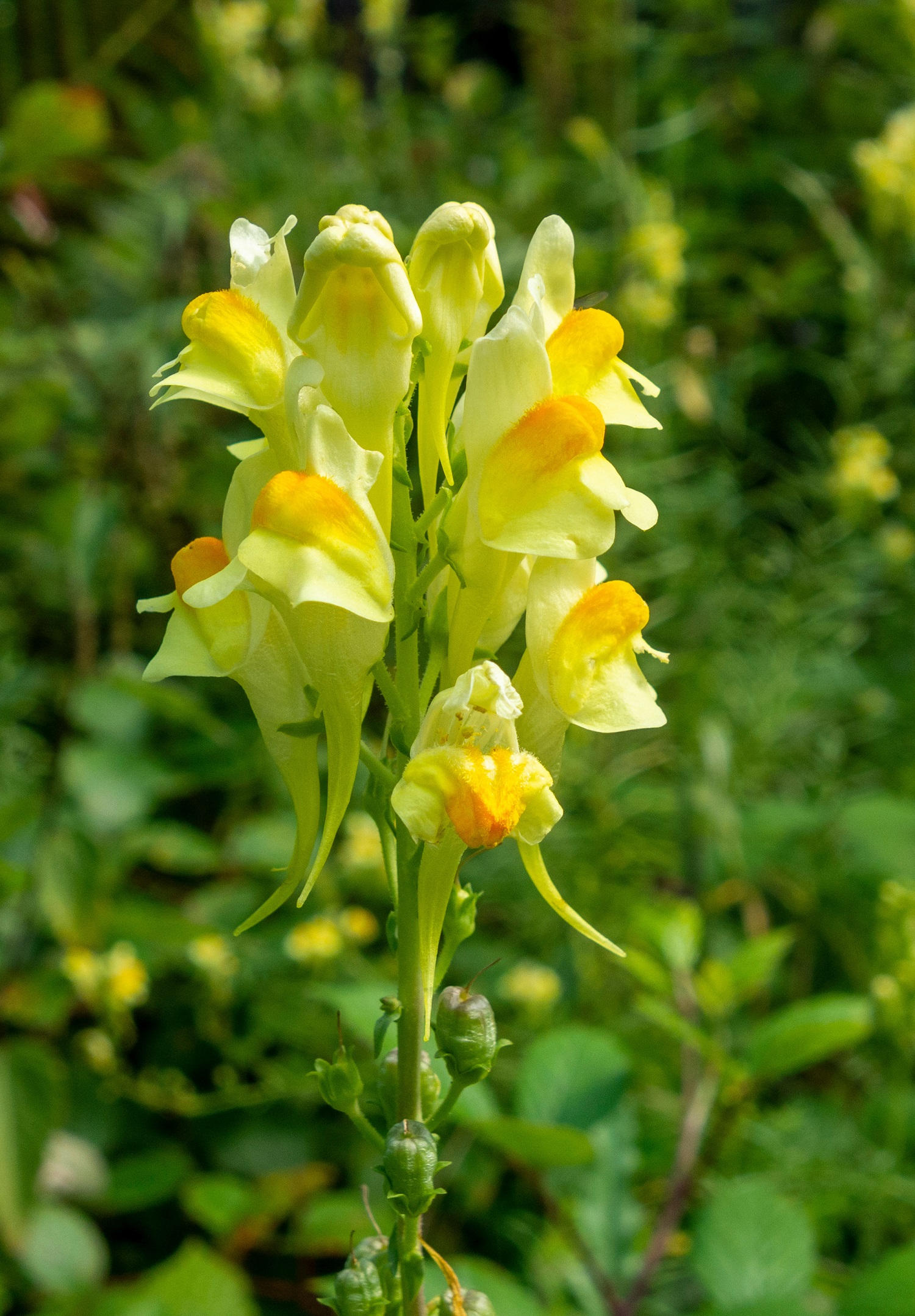Identifying Leafy Spurge

Arriving in North America in the 1800s as either an ornamental or crop seed contaminant, Leafy Spurge has long been difficult to control. This invasive weed can spread locally through reproduction of its root system, which can reach up to 9 metres deep and 4.5 metres wide, as well as through the transportation of seeds.
Growing in a range of soil types, Leafy Spurge forms dense stands that can produce up to 130,000 seeds. In late summer and early fall, seed pods dry out then explode, shooting seeds up to five metres away from the parent plant.1
Standing up to 1-metre tall, Leafy Spurge stems are smooth, hairless, arranged in clumps, and contain a milky latex. The plant’s many narrow, waxy leaves are blue-green in colour until turning yellowish or reddish-orange in late summer. Its flowers are small, yellowish-green, lack petals and sepals, and form clusters at the tips of stems. Flowering occurs early June through July.
Identifying Common (Yellow) Toadflax

Brought from Europe as an ornamental plant over a century ago, Common Toadflax has become a significant problem in pastures. Adapted to a wide range of soil types, Common Toadflax prefers sandy-gravelly soils where its extensive, creeping root system can easily flourish, even from seeds two-to-three weeks old. One plant can produce up to 30,000 seeds2, which are small, flat, brown/black in colour and winged to be carried by wind.
Common Toadflax can grow up to 1-metre tall with a slim hairless stem and light green leaves. Unlike Leafy Spurge, Common Toadflax stems do not contain a milky sap. Its snapdragon-shaped flowers have a long spur that point backwards and are about half the length of the flower. Flower colour is mainly butter yellow with orange petal tips, and flowering occurs from June to October.
Controlling Leafy Spurge & Toadflax
Proven, trusted
Tordon™ 22K has proven itself over the years as the best, most trusted control option for leafy spurge and toadflax. Applied to actively growing weeds, Tordon 22K translocates into the root system to provide extended control of deep-rooted perennials as well as other broadleaf weeds.
Effective, economical
If you’re looking for a more economical, season-long control option, try Grazon™ XC herbicide. With two active ingredients formulated into one easy-to-use liquid, Grazon XC will control perennials like leafy spurge and toadflax, as well as trees and other broadleaf weeds commonly found in pastures. To increase plant uptake for more effective control, use Gateway™ adjuvant (at 0.25-0.375% v/v) with Grazon XC. Subsequent treatments may be required in following years.
Application timing
Leafy spurge:
- Tordon 22K and Grazon XC herbicide should be applied when weeds are actively growing in the full true flowering stage, prior to seed set. True flowering stage occurs when green flowers are present inside of the yellow bracts.
Toadflax:
- Tordon 22K and Grazon XC herbicide should be applied when weeds are actively growing, the majority of the population is flowering and prior to seed set.
Apply in a minimum of 20 gallons per acre of spray solution for ground applications.
Corteva Agriscience™ has a portfolio of solutions to improve your pasture health and productivity. For more information about Corteva Agriscience products contact your Corteva Agriscience Range & Pasture Specialist.
1https://ssisc.ca/wp-content/uploads/2021/11/Leafy-Spurge-Factsheet-2021.pdf
2http://www.agric.gov.ab.ca/app107/loadPest?action=display&id=85








